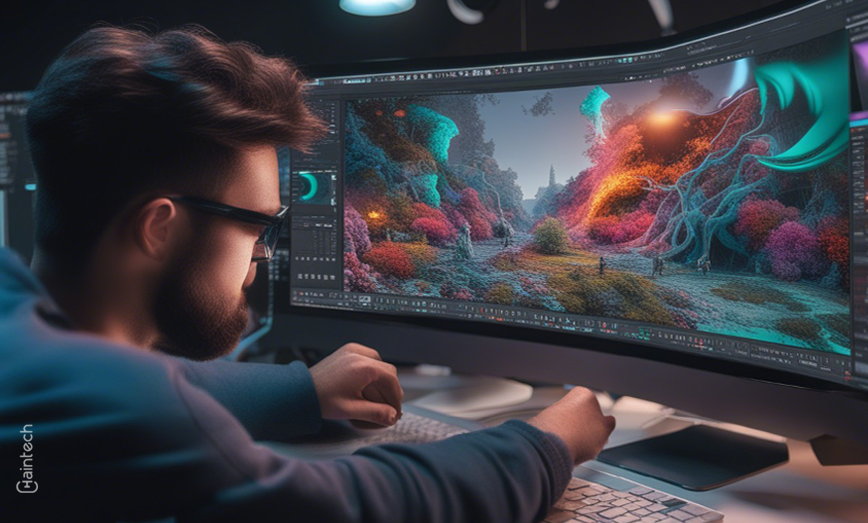Unleashing Design Innovation: The Key to Thriving in Today’s Cutthroat Marketplace

Introduction to Design Innovation
In a rapidly evolving business landscape, design innovation has emerged as a crucial element for companies seeking success. It goes beyond aesthetics and encompasses a transformative potential that can redefine entire industries. By harnessing the power of design, businesses can differentiate themselves, create exceptional customer experiences, and gain a competitive edge.
The Role of Design in Business Success
Evolution of design in business
Design has seen a significant evolution in its role within businesses. Initially perceived as an aesthetic add-on, it has now become a strategic asset that drives business decisions. From simply beautifying products, design has transitioned towards a more user-centric approach. It focuses on understanding the needs and desires of consumers, integrating elements that enhance the overall experience.
Benefits of incorporating design innovation
Embracing design innovation yields substantial benefits for businesses. Firstly, it enhances the customer experience by delivering products and services that not only meet expectations but exceed them. This cultivates brand loyalty, fostering long-term relationships with customers. Secondly, design innovation acts as a differentiator in crowded markets, providing a competitive advantage that propels businesses ahead of their rivals.
Recognizing the Need for Design Innovation
Navigating rapidly changing consumer expectations
To succeed in today’s marketplace, companies must understand the modern consumer mindset. Consumers now seek products and services tailored to their specific needs and desires. By recognizing shifts in consumer preferences, businesses can continuously adapt their offerings to meet these changing expectations.
Adapting to disruptive industry forces
Technological advancements and societal changes have disrupted various industries, requiring businesses to be agile and adaptable. Embracing design innovation allows companies to respond to these forces effectively. By adopting sustainable and ethical design practices, businesses can stay ahead of regulatory and environmental challenges, creating a positive impact on both the industry and society.
Implementing a Design Innovation Strategy
Cultivating a design-driven culture
To truly unlock the potential of design innovation, organizations must embed design thinking throughout the entire company. This entails fostering a culture that embraces creativity, collaboration, and experimentation. By encouraging cross-departmental collaboration between design and other teams, businesses can leverage diverse perspectives to drive innovation.
Investing in skilled designers and talent
Skilled designers are invaluable assets when it comes to implementing design innovation. Companies should invest in hiring diverse design experts who can bring unique perspectives and creative problem-solving skills. Additionally, championing continuous learning and professional development ensures that designers stay at the cutting edge of their field, driving ongoing innovation.
Adopting agile design methodologies
Agile design methodologies allow companies to iterate on their designs and incorporate user feedback in real-time. This iterative approach enables businesses to fine-tune their products and services based on user preferences, improving overall customer satisfaction. By embracing agility, companies can accelerate the design process and respond swiftly to market demands.
Case Studies of Design Innovation Success Stories
Apple Inc.: Revolutionizing user interface design
Apple’s design philosophy has been instrumental in revolutionizing the user interface design of consumer electronics. By prioritizing simplicity, intuitiveness, and aesthetics, Apple has set new standards for user experience. Their design innovation has significantly influenced the way people interact with technology, shaping the entire consumer electronics industry.
Tesla Motors: Redefining automotive design
Tesla Motors has made a name for itself by redefining automotive design. By seamlessly blending aesthetics with sustainable technology, they have disrupted the traditional automobile market. Tesla’s design choices have not only made electric vehicles more appealing but have also challenged industry norms and paved the way for a greener future.
Airbnb: Reshaping the hospitality experience
Airbnb prioritizes design to enhance user trust and reshape the hospitality experience. By focusing on creating intuitive and visually appealing interfaces, they have transformed how people book and experience accommodations. Airbnb’s design innovation has revolutionized the hospitality industry, empowering individuals to share their homes and immerse themselves in unique travel experiences.
Overcoming Challenges in Design Innovation
Financial constraints and resource allocation
Optimizing design investments requires strategic planning and resource allocation. While design innovation can have upfront costs, businesses should consider the long-term benefits it brings. Balancing short-term financial constraints with the potential for increased market share and revenue growth is key to overcoming this challenge.
Alignment of design vision with business goals
Effective communication between design teams and leadership is essential to align the design vision with business goals. Establishing a clear framework for communication and collaboration ensures that design innovation supports the overall business strategy. Measuring the impact of design through established metrics creates a shared understanding of its value.
The Future of Design Innovation
Exploring emerging trends and technologies
As technology continues to advance, emerging trends offer exciting opportunities for design innovation. Integration of artificial intelligence in design processes can enhance creativity, streamline workflows, and personalize user experiences. Additionally, augmented and virtual reality technologies are reshaping user experiences by bringing immersive and interactive elements.
Design thinking and social innovation
Design innovation goes beyond commercial success and can be harnessed for social change. By applying design thinking principles to address societal issues, businesses can create impactful solutions. Sustainable design in a circular economy promotes responsible consumption and production, leading to a more environmentally conscious future.
Summary: The Power of Design Innovation
Design innovation has become a critical driver for business success. By understanding its transformative potential and incorporating it into business strategies, companies can differentiate themselves, create exceptional customer experiences, and gain a competitive advantage. Embracing design innovation is no longer a luxury but a necessity in today’s cutthroat marketplace.









